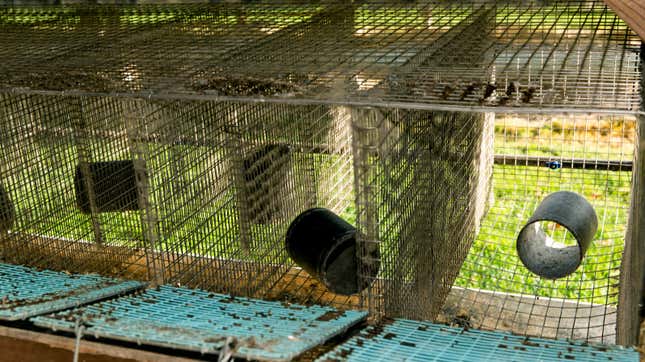Dead Mink the Danish Government Probably Shouldn't Have Killed Are Now Rising From Their Graves
Latest

Recently, the Danish government hastily killed millions of minks thought to be harboring a new strain of the coronavirus. But amid the excitement of the mass slaughter, officials neglected to ensure that the minks were properly buried. Now, the mink corpses are rising from the ground, and the only solution seems to be to exhume the remainder of their adorable bodies and burn them. Happy holidays!
The Danish government first embarked on its mink death quest earlier this month, when it ordered 15 million of the animals to be slaughtered amid virus fears. Two weeks and 2.5 million dead minks later, the government concluded that actually, the threat to human vaccines had “very likely been extinguished,” a realization that the country’s many mink farmers probably wish had been arrived at earlier.
The decision to kill the minks has come back to haunt officials in a very on-the-nose way. Not only are there concerns that their decomposing bodies are having an adverse affect on nearby water, but they weren’t buried deep enough in the ground, causing them to rise back to the surface. The Danish press have dubbed them “Zombiemink.” Per the Guardian:
“As the bodies decay, gases can be formed,” Thomas Kristensen, a national police spokesman, told the state broadcaster DR. “This causes the whole thing to expand a little. In this way, in the worst cases, the mink get pushed out of the ground.”
Police in West Jutland, where several thousand mink were buried in a mass grave on a military training field, have tried to counter the macabre phenomenon by shovelling extra soil on top of the corpses, which are in a 1 metre-deep trench.
“This is a natural process,” Kristensen said. “Unfortunately, one metre of soil is not just one metre of soil –it depends on what type of soil it is. The problem is that the sandy soil in West Jutland is too light. So we have had to lay more soil on top.”
Fortunately, lessons were learned, albeit at the price of a lot of unnecessarily dead mink.
“If there is one thing we have learned from the last few weeks, it is that the decisions we make must be made on the best possible basis,” said Danish Agriculture Minister Rasmus Prehn. “One makes mistakes when being too hasty.”